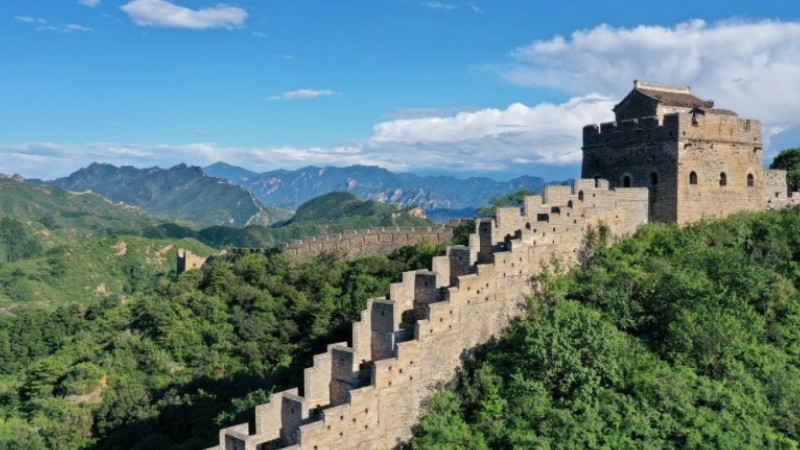China, ASEAN consolidate ties toward closer community with shared future
BEIJING, Sept. 8 (Xinhua) -- China and the Association of Southeast Asian Nations (ASEAN) have consolidated their ties and reinforced the consensus on wider cooperation during the just-concluded 43rd ASEAN Summit and related summits, which are expected to provide greater momentum to building a closer China-ASEAN community with a shared future.
Between Tuesday and Friday, Chinese Premier Li Qiang attended the 26th China-ASEAN Summit, the 26th ASEAN Plus Three Summit and the 18th East Asia Summit, and paid an official visit to the chairing country Indonesia, his maiden visit to an Asian country since he assumed office in March.
This year marks the 10th year that China first proposed building a closer China-ASEAN community with a shared future. Now the world's second and fifth largest economies, respectively, China and the ASEAN have blazed a path of long-term friendship and common prosperity despite the global context with profound changes unseen in a century.
BUILDING AN EPICENTRUM OF GROWTH TOGETHER
Themed "ASEAN Matters: Epicentrum of Growth," the 43rd ASEAN Summit and its related summits focused on establishing the region as an epicenter of economic growth.
"With numerous uncertainties facing the world and East Asian economy, how to increase momentum for the regional economy has become a concern of regional countries," said Liu Qing, deputy head of the China Institute of International Studies.
At the 26th China-ASEAN Summit on Wednesday, Li suggested that China and the ASEAN should work together to build an economic growth center, enhance connectivity, and deepen cooperation in industrial and supply chains. He also called for further cooperation in emerging sectors such as new energy vehicles, photovoltaics, and artificial intelligence.
"China and the ASEAN have a combined population of over 2 billion. If we could work together to develop and preserve this super-sized market, we would unlock enormous potential for economic growth," Li said.
China and the ASEAN remain each other's top trading partners, with their two-way trade value accounting for 15.3 percent of China's total foreign trade in the first seven months of 2023. Being the biggest economy joining the Regional Comprehensive Economic Partnership (RCEP) agreement, whose negotiation was launched by the ASEAN in 2012, China saw a yearly increase of 7.5 percent in its trade with other RCEP members in 2022 after the agreement came into force.
This year's China-ASEAN Summit witnessed the adoption of a joint statement on mutually beneficial cooperation between the Belt and Road Initiative and the ASEAN Outlook on the Indo-Pacific, as well as documents on deepening agricultural cooperation, enhancing bilateral e-commerce cooperation and promoting joint science and technology innovation.
"We need to make this (China-ASEAN) cooperation meaningful by realizing concrete and mutually advantageous cooperation," Indonesian President Joko Widodo said at the summit.
EXAMPLE OF REGIONAL COOPERATION
Li said making Indonesia his first stop is for development, friendship, peace and cooperation.
China and Indonesia established a comprehensive strategic partnership in 2013, which has continued to deepen and consolidate over the past decade, with the Jakarta-Bandung High-Speed Railway (HSR) being an example of the cooperation achievements.
Connecting the capital city of Jakarta and Indonesia's fourth largest city of Bandung, the HSR is 142 km long and has a design maximum speed of 350 km per hour. It is the first overseas high-speed railway project that fully uses Chinese railway systems, technology, and industrial components.
When inspecting the project, Li said the Jakarta-Bandung HSR is a successful example of developing countries in the region working together toward modernization.
In the long run, the railway will further optimize the local investment environment, increase employment opportunities, and promote business and tourism along the railway, said Chinese Ambassador to Indonesia Lu Kang.
Lu said in the future the two sides will advance strategic cooperation to a higher level and turn the vision of building a China-Indonesia community with a shared future into reality, injecting more certainty and positivity into the region and the world.
JOINTLY MAINTAINING REGIONAL PEACE
The Chinese premier's trip is also a practice of China's neighborhood diplomacy of amity, sincerity, mutual benefit, and inclusiveness.
"What ASEAN countries want is strategic independence. They want to have a say in their own development," said Zhang Jie, a senior fellow on Asia-Pacific studies at the Chinese Academy of Social Sciences.
Upon his arrival in Indonesia, Li stressed that "China firmly supports the ASEAN's central position in regional cooperation and its greater role in international affairs."
In Jakarta, Li reiterated China's firm stance on pursuing peaceful development and pledged to actively work with ASEAN countries to advance the text-based Code of Conduct in the South China Sea consultations. He also stressed the necessity of opposing "picking sides, bloc confrontation and a new Cold War."
The China-ASEAN cooperation has come a long way. "The key reason is that we both have a keen understanding about hardships, a relentless pursuit of peace, a strong aspiration for development, and take real actions to preserve regional stability," Li said at the China-ASEAN Summit.
It has been 20 years since China became the first country to join the Treaty of Amity and Cooperation in Southeast Asia. In 2021, China and the ASEAN established a comprehensive strategic partnership.
Li added that as long as China and the ASEAN keep to the right path, their cooperation will "be as firm as ever and press ahead against all odds."
Photos
Related Stories
- Key facts about China-ASEAN cooperation
- Full Text: Speech by Chinese Premier Li Qiang at the 26th ASEAN Plus China, Japan, ROK Summit
- Li highlights unity as key to prosperity
- Chinese premier calls for not politicizing economic issues
- China, ASEAN join forces to build an ever closer community with shared future
- Chinese premier urges East Asia Summit to better promote regional stability, prosperity
- Chinese premier aboard bullet train bound for Bandung, site of historic conference of third world
- Premier Li calls for enhanced innovation cooperation among regional parties
- Chinese premier says opposing new Cold War essential
- Chinese premier calls for prioritizing development in regional cooperation
Copyright © 2023 People's Daily Online. All Rights Reserved.









